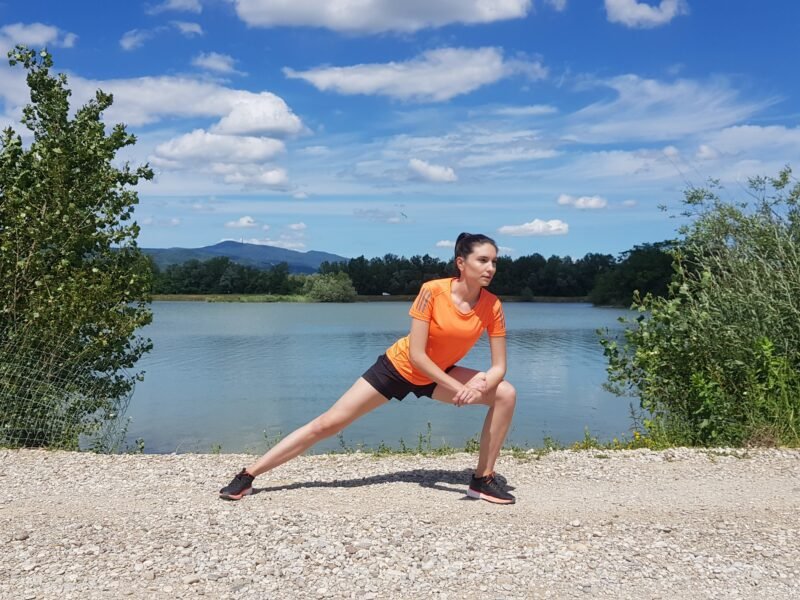What to Do After a Long Run? (7 Necessary Things)
Long runs are one of the more demanding training types. To recover as soon as possible after a long run and be ready for the next workout, it is advisable to have a certain routine.
In this article, I explain in detail what to do after a long run.
A long run is not done after you run the set mileage. It is also important to pay attention to what you do after it.
After a long run, it is advisable to do cool-down and stretching exercises and pay attention to your fluid intake and energy replenishment. Also, it is important to immediately change your clothes so as not to catch a cold or diminish the effect of a well-done workout.
If you wish to know what you should not do after a long run, read the article 6 Things What Not to Do After a Long Run.
Below I will explain to you in detail what you should do after a long run.

1. Make sure that you cool down
After a long run, do a recovery run or walk for 5 to 10 minutes.
Cooling down after training is just as important as warming up before it.
While a warm-up prepares your body and mind for the effort that awaits you, a cooldown after training gradually returns your body to normal.
The purpose of cooling down is to return the body to the level before exercise.
A cooldown after a long run prevents your blood from accumulating in your legs, improves circulation, reduces your heart rate, steadies your breathing, and helps you lower your body’s temperature.
Likewise, it eliminates metabolic products created during running, leading to a reduction in muscle pain and stiffness.
Furthermore, cooling down after training prepares you for the next workout in the best possible way.
Info
If you finish a workout without an adequate cooldown, you will slow down your recovery process, and you will eliminate metabolic products created during running more slowly. This can lead to muscle cramps and even nausea and dizziness.
2. Do static stretching exercises
After you have cooled down, do some static stretching exercises.
There are conflicting opinions as to whether static stretching exercises are recommendable and whether they even prevent injury.
However, there is no scientific evidence to back that up, and I think that it is best to listen to your body.
I find static stretching exercises suitable for me and I do them while focusing on certain key muscle groups. I perform each exercise for about 30 seconds.
Static stretching exercises allow your body to cool down while maintaining flexibility. Likewise, they can help improve circulation, which leads to faster recovery.

3. Drink water or isotonic drinks
After a long run, it is important to replenish the fluid and electrolytes that you have lost through sweating. Keep in mind that you will still sweat even if it’s cold outside.
Drink water or an isotonic drink within the first 10 to 15 minutes after a long run workout.
Isotonic drinks contain electrolytes and sugars that your body needs to make up for what was lost during running and to avoid muscle cramping.
4. Replenish your lost energy
After a long run, it is necessary to replenish your glycogen stores and feed your muscles to restore them and speed up the recovery process.
It is advisable to eat a smaller meal that contains both carbohydrates and proteins for 20 to 30 minutes after a long run.
Carbohydrates are essential for maintaining and replenishing energy, while proteins are needed for muscle regeneration and recovery.
Avoid hard-to-digest foods, which include everything rich in fiber or fats, such as nuts or chocolate.
After training, I find it best to drink chocolate milk (a great combination of carbohydrates and proteins) or eat a banana or a protein bar. Afterward, 2 hours after training, I eat a normal meal such as chicken and rice.
5. Take a shower and change your clothes
As soon as you finish a long run and do your cooldown and stretches, take off your wet clothes, and take a shower.
If you can’t take a shower right away, at least change into some dry clothes.
Even if you aren’t too sweaty, the clothes you run in are full of bacteria that can irritate your skin.
However, besides hygienic reasons, it is important to shower and change clothes as fast as possible so as not to catch a cold and to keep your muscles warm.
That way, you boost your circulation, which helps you recover after training.
6. Rest and pay attention to your recovery
You’ve done a long run, one of the most demanding types of training, so you have deserved to rest. Give yourself enough time to recover and be ready for the next workout.
This doesn’t mean that you should spend the rest of the day on your couch watching TV. Instead, you should go for a walk or have a coffee.
Do everything that you find fulfilling that doesn’t exhaust you but still keeps you on the move for a while. That way, your muscles will stay relaxed, and you will speed up your recovery.
Keeping your legs elevated is another way to boost your circulation and speed up your recovery.
Using a roller can also help you recover after a long run. A roller can help you reduce muscle pain and relieve stiffness and tightness.

7. Listen to your body
We are all individuals, and everyone finds a different post-workout routine suitable for themselves.
Listen to your body and do whatever suits you. You might find it harder to find a suitable routine at first. Stay patient and listen to your body.
To learn all about the long run read this article: What is Considered a Long Run? (5 Long Run Examples).

Matea Matošević
Hi, I’m Matea! I’m an Olympic Marathon Runner, founder, and writer behind OLYRUN.com. On this site, I provide help in the form of my knowledge and experience to all who love running and active living. Read more…

